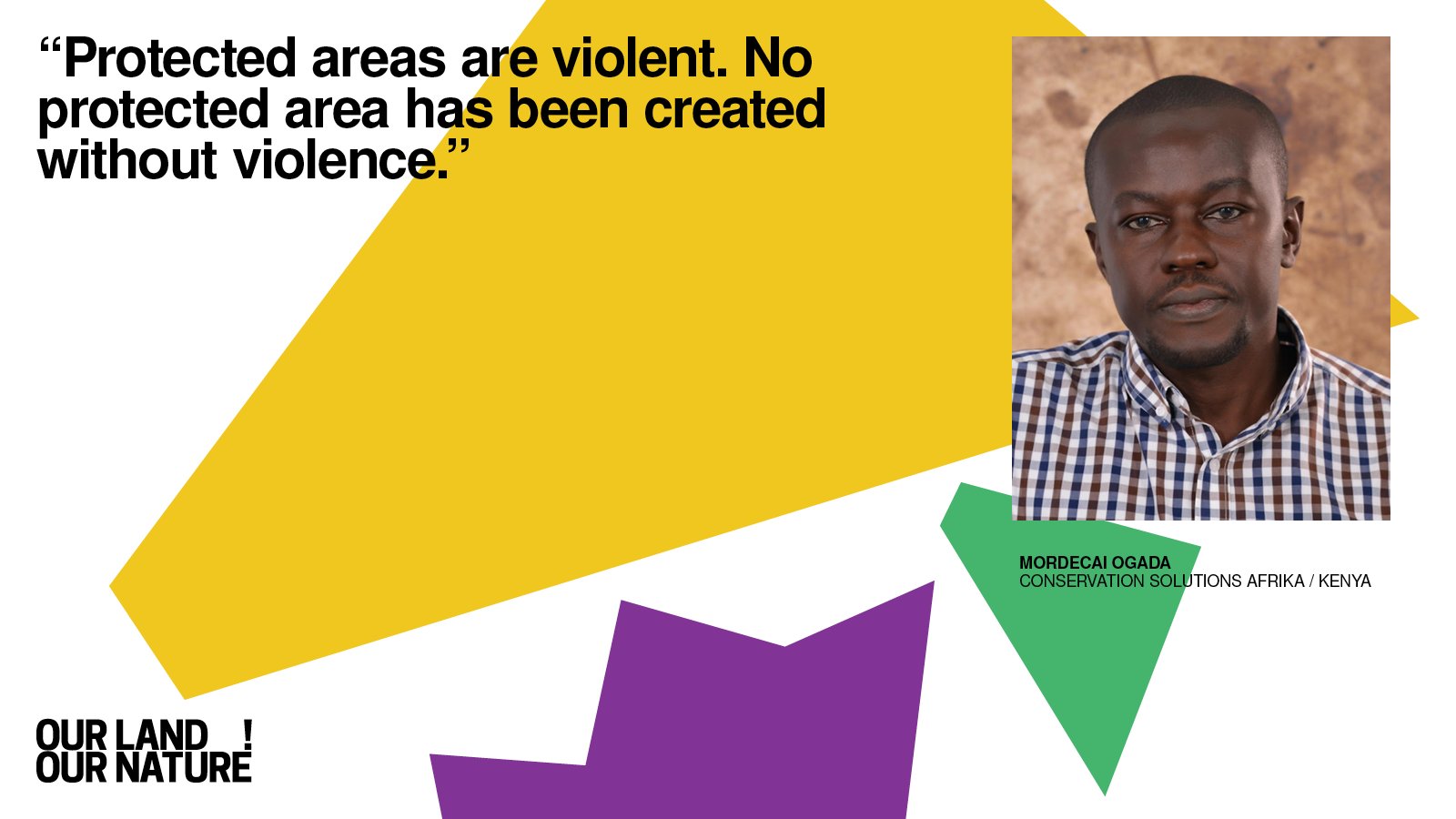Mar 22
20230
Nature Conservancy, Neo-Liberalism and the Defanging of Feminism, Whiteness & Aversive Racism
Barbados Belize Blue Bonds Climate Capitalism Commodification of Nature Credit Suisse Debt-for-climate swaps Debt-for-nature swaps ESG Gabon GEF IMF Imperialism Sri Lanka The Nature Conservancy The Royal Foundation UNDP World Bank “Rhino bond”
Before Collapse, Credit Suisse Quietly Conquered an Obscure Debt Market – Debt-for-nature Swaps
March 21, 2023
By Natasha White
The collapse of Credit Suisse isn’t just worrying for the global financial system. It’s a banking crisis that also has real consequences for the fight against environmental degradation.
Before its rescue by Swiss rival UBS, Credit Suisse had quietly become a major player in an obscure market that purports to help developing countries ease their debt burdens in exchange for protecting nature. Known as debt-for-nature swaps, the complex financial instruments help governments restructure their debt to raise money that can be used to fund conservation efforts.
Credit Suisse was the sole structurer and arranger of the world’s largest debt-for-nature swap, a $364 million deal that it orchestrated in 2021 along with The Nature Conservancy, a charity, for Belize. Last year, it sealed another $150 million deal for Barbados.
The deals were likely a good source of profits for the bank, according to Daniel Munevar, an economic affairs officer at the United Nations Conference on Trade and Development. The Belize deal was “free money for Credit Suisse because they hold no risk whatsoever,” he said. Part of the transaction was insured by the US International Development Finance Corp., which agreed to effectively cover payments if Belize defaulted. Credit Suisse helped design a similar instrument for Barbados, this time backed by the Inter-American Development Bank and TNC.
Officials from Belize, Barbados and TNC said that Credit Suisse’s troubles would have no impact on their existing debt-for-nature arrangements. But any new debt-swap deals that Credit Suisse may have had in the works “will not happen any time soon,” said Munevar.
While debt-for-nature swaps have been around since the 1980s, Credit Suisse has in recent years helped revive interest in the instruments and for the first time opened them up to institutional capital. The bank raised money for Belize and Barbados from pension funds including Sweden’s Alecta and Nuveen LLC, a unit of the US’s TIAA, by issuing so-called blue bonds tied to the deals.
Image source: Carbon Credits website, November 9, 2022, “Debt-for-Nature Swaps Are Drawing Attention, Carbon Credits Play A Role”
To do so, Credit Suisse developed complicated structures involving multiple “special purpose vehicles” responsible for payments that stand alone from the bank after the deal is closed, according to a sustainable bond investor with close knowledge of debt-nature swaps who asked not to be named. Those SPVs will probably insulate borrowers and investors from any fallout from Credit Suisse’s sale, the person said.
The convoluted setup has drawn criticism from sovereign debt experts for its high cost and lack of transparency. And the opaque terms of the Belize and Barbados deals — the first of their kind — mean outside analysts will struggle to assess precisely what comes next.
“We’re feeling around in a dark room,” said Sean Newman, a private investment adviser and former chief investment officer of Sagicor Group, a financial services conglomerate in the Caribbean. “It’s certainly very unprecedented and uncertain times. There may be a gap that will be created and the question then is: Who is going to take that?”
UBS, which declined to comment on the future of Credit Suisse’s debt-for-nature swaps, has indicated it plans to shrink the latter’s investment banking arm.
“Credit Suisse stands by the structures for these transactions, which deliver tangible benefits, as well as their transparency,” the bank said in a statement. “Credit Suisse continues to operate in its ordinary course of business and any suggestion otherwise is false and misleading.”
Several other countries have signaled they’re interested in debt-for nature swaps. Gabon, the world’s fourth most-forested nation, has proposed a $700 million restructuring to protect its marine life. Ecuador is working on an $800 million transaction, Reuters reported, and Sri Lanka is considering a $1 billion deal. Analysts expect the global debt-for-nature swaps market to eventually exceed $800 billion.
The instrument could be a crucial tool for poor countries struggling to find a way to repay debt and protect against nature loss. Thirty-seven low-income countries are currently in or at high risk of debt distress, according to the World Bank. A total of 18 emerging markets have dollar-denominated sovereign debt trading at distressed levels, according to data compiled in a Bloomberg index.
Credit Suisse was also experimenting with other tools to help developing countries fund environmental protection. It was the sole structurer and joint book runner on the World Bank’s $150 million “Rhino bond,” a unique instrument designed to fund the protection of black rhinos in South Africa. The bank had also committed to spend 300 billion Swiss francs ($324 billion) on sustainable finance activities by 2030.
“Anytime there is a bank failure of this magnitude it has a ripple effect across the world,” said Ryan Straughn, an official in Barbados’ finance and economic affairs ministry. “The world cannot afford a financial crisis on top of the climate crisis.”
— With assistance by Sydney Maki and Antony Sguazzin

















![Mark R. Tercek is the former president and CEO of The Nature Conservancy stepping down June 7, 2019. [A #MeToo scandal engulfs The Nature Conservancy]. He is co-author of the book Nature’s Fortune: How Business and Society Thrive by Investing in Nature](https://i0.wp.com/www.wrongkindofgreen.org/wp-content/uploads/2019/09/Tercek_PES_small.jpg?resize=690%2C604&ssl=1)



![April 4, 2019, Conservation International (CI) expresses its support for "natural climate solutions". Fast facts: 2018 revenues for CI were in access of 145 million USD (145,013,840.) Wes Bush, CEO of Northrup Grumman, one of the world's largest weapons manufacturers, serves on the board of Conservation International, while Rob Walton, from the Walmart empire, serves as chairman of the executive committee. [2018 Form 990]](https://i0.wp.com/www.wrongkindofgreen.org/wp-content/uploads/2019/09/Conservation-International-April-4-2019-Forgotten-Solutions-Thunberg-Mobiot-Guardian.png?resize=530%2C638&ssl=1)
![Conservation International, A New Deal for Nature: "Countries are in the process of negotiating a new global biodiversity framework through the Convention on Biological Diversity (CBD), which has been called a “New Deal for Nature.” This pact, expected to be agreed in Beijing in late 2020, will lay out the global strategy for protecting nature through 2030." Identified in the Level 2 Actions for "mainstreaming biodiversity" is "incorporating the value of biodiversity into national accounting processes". [Source]](https://i0.wp.com/www.wrongkindofgreen.org/wp-content/uploads/2019/09/NDFN-CI.png?resize=690%2C419&ssl=1)

![Nature4Climate Voices, Paul Polman: served in senior leadership roles at both Nestlé and Procter & Gamble prior to becoming CEO of Unilever (2009-2018), B Team chair, chair of the International Chamber of Commerce, appointed to the U.N. Secretary General’s High-level Panel responsible for developing the Sustainable Development Goals (SDGs), founding member of the World Business & Sustainable Development Commission, U.N.-appointed SDG Advocate, leading member of Financing Capitalism for the Long-Term (FCLT), the Coalition for Inclusive Capitalism, the Global Commission on the Economy and Climate and the Food and Land Use Coalition (which he chairs), counsellor and chair of the Global Advisory Board of One Young World (co-founded by “B Team expert” David Jones), named an Honorary Knight Commander of the Order of the British Empire (KBE) for services to business in 2018, a non-executive director of Dow since 2010. Stern also serves as commissioner to the Energy Transitions Commission and has been selected to serve as a One Planet Lab member, the aforementioned high-level advisory group steered by the French Government. [Further reading: The New Green Deal is the Trojan Horse for the Financialization of Nature, Volume I, Act V and A Design to Win — A Multi-Billion Dollar Investment, Volume II, Act I]](https://i0.wp.com/www.wrongkindofgreen.org/wp-content/uploads/2019/09/Polman-Nature4Climate.png?resize=690%2C218&ssl=1)
![Nature4Climate Voices, Christiana Figueres: former executive secretary of the United Nations Framework Convention on Climate Change (UNFCC) from 2010 to 2016, vice-chair of the Global Covenant of Mayors for Climate & Energy, ClimateWorks Board Member, World Bank Climate Leader, B Team leader, leader of Mission2020, and board member of both the World Resources Institute and Unilever. Figueres is also identified as a “distinguished member” of Conservation International. [Further reading: To Plunder What Little Remains: It’s Going To Be Tremendous, Volume II, Act III]](https://i0.wp.com/www.wrongkindofgreen.org/wp-content/uploads/2019/09/Figueres-Nature4Climate.png?resize=690%2C218&ssl=1)
![Nature4Climate Voices, Nicolas Stern: international advisor to the Global CCS Institute, co-chair of the Global Commission on the Economy and Climate overseeing The New Climate Economy, chair of SYSTEMIQ board of directors, former World Bank chief economist. [Further reading: A Design to Win — A Multi-Billion Dollar Investment, Volume II, Act I]](https://i0.wp.com/www.wrongkindofgreen.org/wp-content/uploads/2019/09/Stern-Nature4Climate.png?resize=690%2C286&ssl=1)
![Nature4Climate Voices, Achim Steiner: UNDP Administrator, and former advisory board member of The Economics of Ecosystems and Biodiversity (TEEB - now the Natural Climate Coalition, i.e. the financialization of nature), voice for the 2009 Green New Deal [Further reading: They Mean Business [Volume II, Act IV]](https://i0.wp.com/www.wrongkindofgreen.org/wp-content/uploads/2019/09/Steiner-Nature4Climate.png?resize=690%2C208&ssl=1)




![September 3, 2018, Global Landscapes Forum. During the closing remarks of the Global Landscapes Forum on December 9, 2018, at COP24, Jennifer Morgan, executive director of Greenpeace International stressed that in addition to shifting global focus from the oil and transportation sectors to land and forests, additional co-operation was required to reach consensus on the New Deal for Nature.[Further reading: The House is On Fire! & the 100 Trillion Dollar Rescue, Volume I, ACT VI] The GLF was formed in 2013 by the World Bank, the Center for International Forestry Research (CIFOR) and the United Nations Environment Programme](https://i0.wp.com/www.wrongkindofgreen.org/wp-content/uploads/2019/09/Global-Landscape-Forum-Sept-3-2018-Forgotten-Solutions.png?resize=595%2C302&ssl=1)


![December 10, 2018, Achim Steiner promotes the "Forgotten Solutions". Steiner will appear this week at the Social Good Summit (founded and/or financed by the UN, Purpose, Gates Foundation, etc.) with Greta Thunberg and Christiana Figueres. Steiner, UNDP Administrator is a former advisory board member of The Economics of Ecosystems and Biodiversity (TEEB). TEEB, initiated in 2008, and officially launched in 2012, hosted by UNEP and backed by the European Commission and countries including Germany, Norway, and the United Kingdom, has since been absorbed/rebranded into the Natural Capital Coalition. The Natural Capital Coalition is working with the world’s most powerful corporations and institutions for the implementation of the financialization of nature.]](https://i0.wp.com/www.wrongkindofgreen.org/wp-content/uploads/2019/09/UNREDD-December-10-2018-Steiner-Forgotten-Solutions.png?resize=538%2C625&ssl=1)















































































































![The Thunberg-Monbiot film, emphasizing the urgency of funding “natural solutions”, was paid for by Conservation International and the aforementioned *Food and Land Use Coalition, with “guidance” provided by Nature4Climate (The Nature Conservancy, We Mean Business, WWF, UN-REDD, et al.) and Natural Climate Solutions. [*Member foundations include ClimateWorks, the David & Lucile Packard Foundation, the Ford Foundation, the Gordon & Betty Moore Foundation, Good Energies, and Margaret Cargill.]](https://i0.wp.com/www.wrongkindofgreen.org/wp-content/uploads/2019/09/Natural-Climate-Solutions-Nature-Conservancy.png?resize=369%2C431&ssl=1)





















 The concept of ecosystem services originates with some in the field of
The concept of ecosystem services originates with some in the field of 







